After finishing the action, I turned my attention to the barrel. As I said in an earlier post, I purchased the barrel from Shilen. It is a #6 or lightweight target contour Match grade barrel manufactured from chrome-moly with a .224 bore with a 1:9 twist. The first step is to mount the barrel in the lathe. The barrel is precisely centered by the use of dial indicators on both sides. Again, this setup should be as precise as possible to ensure maximum accuracy from the rifle. The pin seen inside the barrel fits tightly in the bore and is precision made. I managed to get the run-out on this barrel to about 0.00025 in (0.00635 mm).
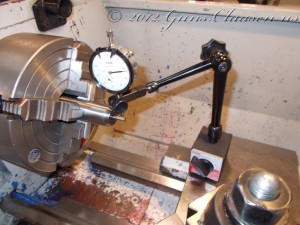
Chamber side

Muzzle side
The first machining step is to face the chamber side of the barrel.
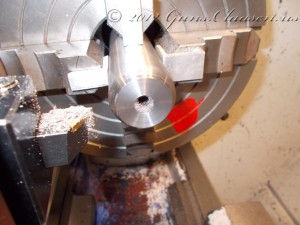
Facing
Then the tenon is cut. This is the section of the barrel that will thread into the receiver. It is turned down in size until the recoil lug will fit.
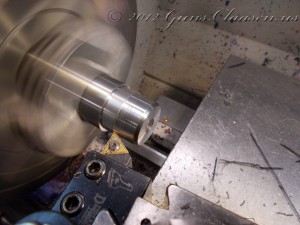
Cutting the tenon
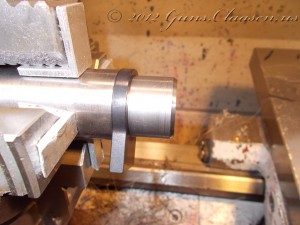
Recoil lug fits
The next step is to cut threads into the tenon. I prefer doing this at the back of the lathe and to cut the threads away from the work. Doing it this way is better for me as it is more difficult to make a mistake by pulling the cutting tool away from the work too late and running into the tenon shoulder. For me, it also makes the threads look better where they stop on the tenon. Yes, I know once the rifle is put together, it will not be visible.
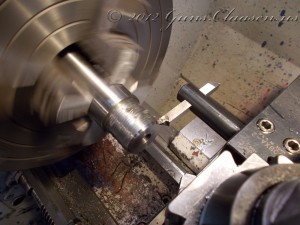
Starting the threads

About halfway done
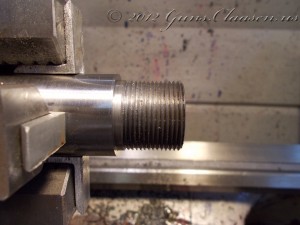
Done!
Of course I need to check that it all goes together.

Receiver fit check
The design of the Remington 700 call for the barrel to be counter-bored. This is where the bolt will actually fit and the reason the front of the bolt lugs was trued. This is a fairly easy step if you have the correct counter-bore tool.
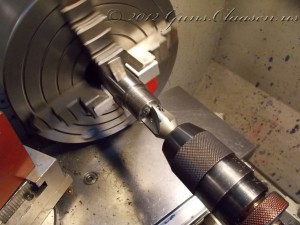
Counter-boring
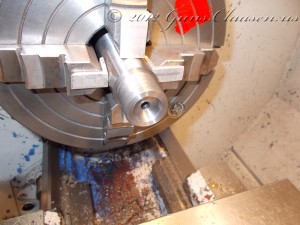
Counter-bore completed
Now it is time for the most critical step, cutting the chamber. This is a slow process as the reamer (the cutting tool) has to be pulled out constantly to clean both it and the inside of the barrel. There is also two reamers used in this process, a roughing and a finishing reamer.
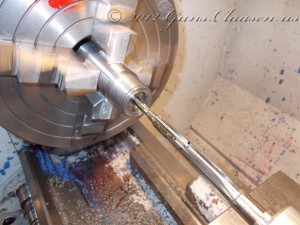
Starting with the roughing reamer
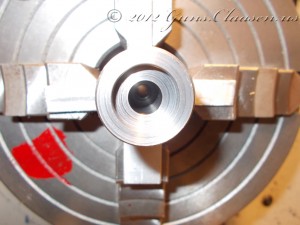
Some time later it is finished!
In the next post on this build, I will attach the receiver to the barrel, assemble the trigger and test fire the rifle.